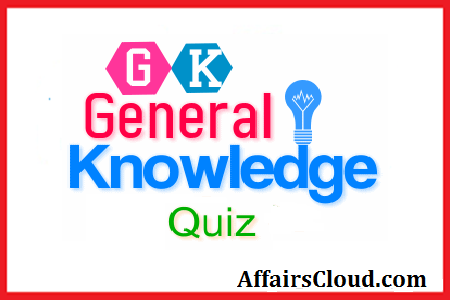Hello Aspirants. Welcome to Online General Knowledge section in Affairs cloud, which is important for all the competitive exams. We have created Some questions related to Indian GK(Economy) !!!
- …………………….. gives final approval to the five year plans
1.Planning Commisiion
2.NITI Aayog
3.National Income committee
4.National Development Council
5.None of theseAnswer – 4.National Development Council
Explanation :
The National Development Council (NDC) or the Rashtriya Vikas Parishad is the apex body for decision making and deliberations ondevelopment matters in India, presided over by the Prime Minister. - PURA stands for …………………
1.Providing Urban Amenities in Rural Areas
2.Providing Urban Arrangement in Rural Areas
3.Providing Urbanization Amenities in Rural Areas
4.Popular Urban APJ in Rural Areas
5.None of theseAnswer – 1.Providing Urban Amenities in Rural Areas
Explanation :
Provision of Urban Amenities to Rural Areas (PURA) is a strategy for rural development in India. This concept was given by former president Dr. A.P.J. Abdul Kalam and discussed in his book Target 3 Billion which he co-authored with Srijan Pal Singh. The genesis of PURA concept can be traced to the work done by Nimbkar Agricultural Research Institute in early 1990s on Taluka energy self-sufficiency. - The census 2011 was the ………………. National Census of the country
1.16th
2.11th
3.15th
4.13th
5.None of theseAnswer – 3.15th
Explanation :
The 15th Indian Census was conducted in two phases, house listing and population enumeration. House listing phase began on 1 April 2010 and involved collection of information about all buildings. Information for National Population Register was also collected in the first phase, which will be used to issue a 12-digit unique identification number to all registered Indians by Unique Identification Authority of India. The second population enumeration phase was conducted between 9 to 28 February 2011. - The Government of India announced its New National Population Policy on ……………..
1.26th January, 2000
2.12th September, 2000
3.15th February, 2000
4.15th August, 2000
5.None of theseAnswer – 3.15th February, 2000
Explanation :
The National Population Policy was announced on February 15, 2000 with objectives aimed at meeting the needs for contraception, health care infrastructure, health personnel and integrated service delivery. The mid-term objectives are outlined as aimed at bringing the total fertility to replacement levels two children per couple by a vigorous implementation of intersectoral strategies. The long-term objective is stabilisation of population for 2045. - State Commissions on population headed by ………………………
1.Election Commissioner
2.Governors
3.Chief Ministers
4.Gram Panchayat Officers
5.None of theseAnswer – 3.Chief Ministers
Explanation :
State Commissions on population headed by Chief Ministers.National Population is a commission of the Indian government.It is chaired by the prime minister with the Deputy Chairman Planning Commission as vice chairman. - To achieve zero growth rate of population by ………………………
1.2034
2.2025
3.2020
4.2045
5.None of theseAnswer – 4.2045
Explanation :
The long-term objective is to achieve a zero growth rate of population by 2045 at a level consistent with the requirements of sustainable economic growth, social develop-ment, and environmental protection. - The ………………… sector is is the largest employer in India’s economy
1.Railway
2.Banks
3.Agricultural
4.Education
5.None of theseAnswer – 3.Agricultural
Explanation :
The agricultural sector is the largest employer in India’s economy - The Economy ofIndia is the ……………………. largest in the world by nominal GDP and the third-largest by purchasing power parity
1.Second
2.Seventh
3.Sixth
4.Sixteenth
5.None of theseAnswer – 2.Seventh
Explanation :
The Economy of India is the seventh-largest in the world by nominal GDP and the third-largest by purchasing power parity(PPP). The country is classified as a newly industrialised country, one of the G-20 major economies, a member of BRICS and a developing economy with an average growth rate of approximately 7% over the last two decades. - Which the richest Indian state and has an annual GDP of US$220 billion, nearly equal to that of Pakistan or Portugal
1.Tamil Nadu
2.Maharashtra
3.Madhya Pradesh
4.Andra Pradesh
5.None of theseAnswer – 2.Maharashtra
Explanation :
Maharashtra is the richest Indian state and has an annual GDP of US$220 billion, nearly equal to that of Pakistan or Portugal, and accounts for 12% of the Indian GDP followed by the states of Tamil Nadu and Uttar Pradesh. - ………………….. is the largest source of revenue for Indian Government
1.Land revenue
2.Excise duty
3.Service tax
4.Income tax
5.None of theseAnswer – 2.Excise duty
Explanation :
Five main revenue sources of Central Government:-
1.Land revenue
2.Excise duty
3.Service tax
4.Income tax
5.Interest from payments
AffairsCloud Recommends Oliveboard Mock Test
AffairsCloud Ebook - Support Us to Grow
Govt Jobs by Category
Bank Jobs Notification


